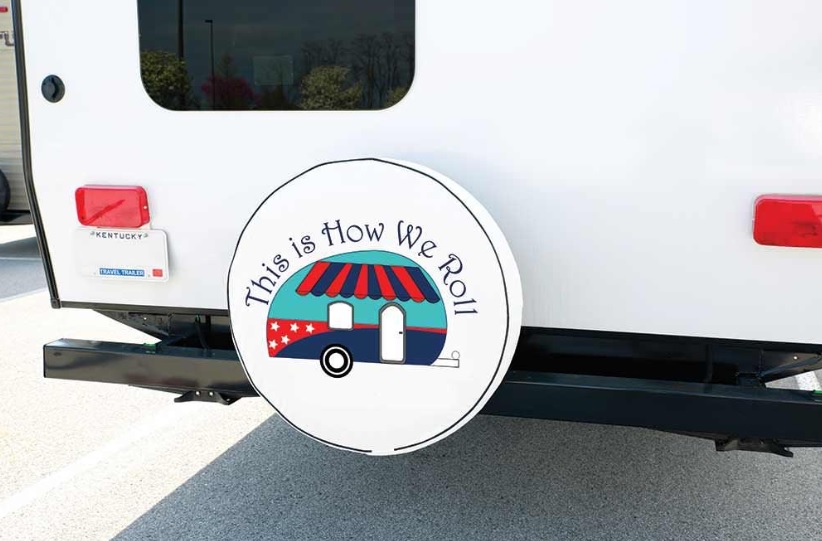Editor’s Note: This blog has been updated in 2021 to reflect current industry standards.
In older cars, every model came with a spare tire that matched the tires already on the vehicle. Over the years, car manufacturers have realized the spare tire is used so infrequently, it does not make much sense to equip every car with a full-sized spare. For this reason, manufacturers began leaving a space-saver spare (otherwise known as a donut) in place of a full-size spare.
Nowadays, spare tires should never be a permanent replacement, begging the question, how long can you really drive on a spare tire? The type of spare tire in your vehicle makes a difference in how long and how far you can drive before fixing your tire or buying a new tire.
These narrow, compact spares are designed to save space and weight in the vehicle, allowing the manufacturers to build a smaller car. However, the tire itself is not built to last. Your owner’s manual will give recommendations for driving time and speed. A general rule of thumb is to drive no farther than 70 miles and no faster than 50 miles per hour before replacing your donut with a new tire.
The biggest reason why you should avoid prolonged use of space-saver or donut tires is that they have little to no tread, making the spare vulnerable to road hazards and projectiles. It is also much smaller than the other 3 tires, making it spin faster to keep up with the moving car.
Run-flat tires are becoming more common as manufacturers realize they cost less to maintain than traditional tires. If you drive a recent model BMW or a MINI, your car likely came with run-flat tires. These tires are tougher than most tires but are not designed to last forever, such as a full-spare tire.
Rather than including a spare tire, these run-flat tires are built to withstand most road hazards, including punctures.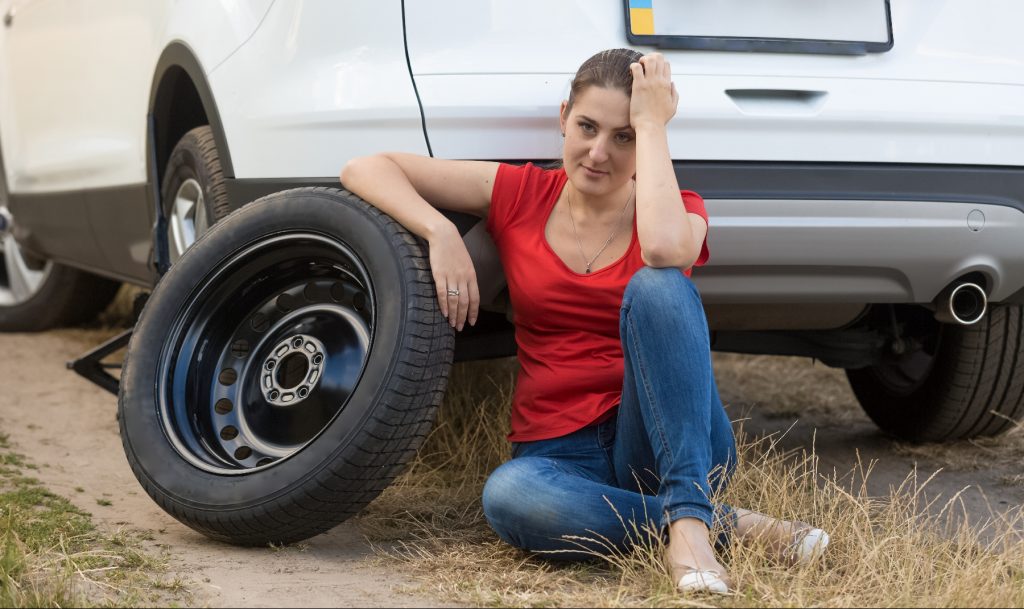 Rather than going flat or blowing out (as traditional tires do), a run-flat tire can continue to drive after punctured for about 50 miles before needing to be replaced
. However, these tires cost more to replace than traditional tires.
Rather than going flat or blowing out (as traditional tires do), a run-flat tire can continue to drive after punctured for about 50 miles before needing to be replaced
. However, these tires cost more to replace than traditional tires.
While you have a bit more room to travel on these types of tires, it is important to inspect your tire as soon as you are aware of any change in tire pressure. This gives you an idea of how long you have until you have no choice but to have your tire replaced.
How Long Can You Drive on a Full-Size Spare Tire?
For years, cars were built with spare tire wells capable of carrying a full-size spare. On many older cars (and a few newer models), this is still the case. If you bought a truck, SUV, or another large vehicle, your car probably is equipped with a full-size spare. While a full-size spare is heavier and requires a larger space for storage, these tires are more durable and can handle a drive similar to a regular tire.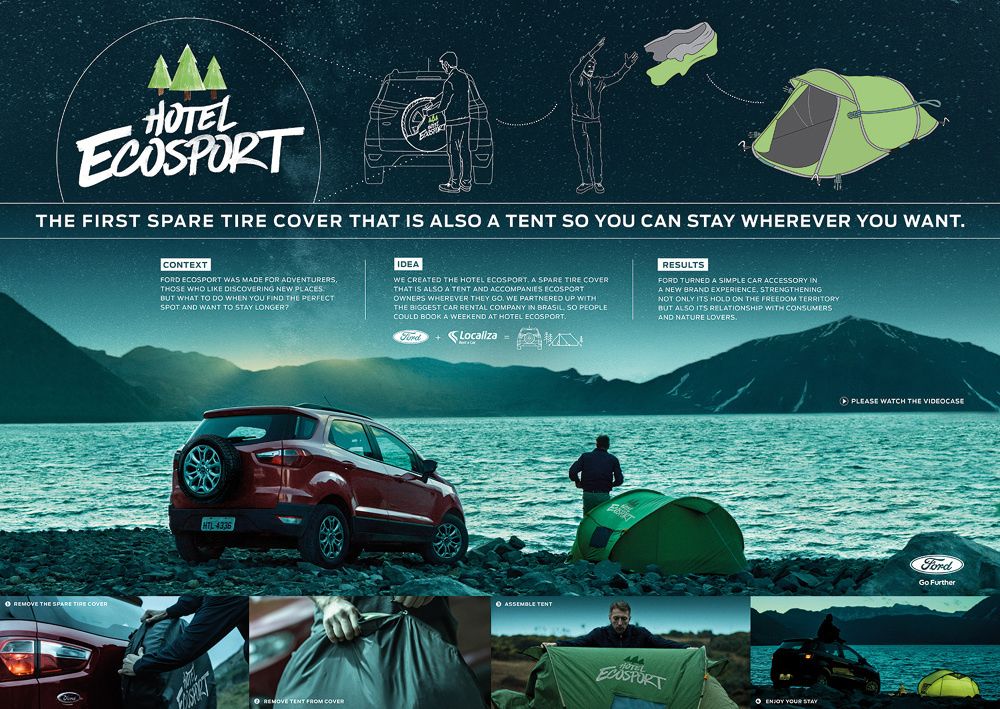
Once you have taken your vehicle to an auto repair shop and learned that the punctured tire is irreparable, you can request the spare tire to be put on the original rim.It is important to note that a full-size spare tire is usually not produced by the same manufacturer as the rest of the tires on your vehicle, meaning it will handle differently than the other tires. We suggest buying a new tire as soon as you can afford to, but this can easily buy you some time.
Christian Brothers Automotive was born out of the idea of not just being an auto repair shop, but also a neighbor. Our mission is simple: to take root in the local communities we serve and to create an uncommonly great experience for customers in need of auto service and repair. To have your tires inspected or to replace a spare tire, please do not hesitate to call or visit your local Christian Brothers Automotive shop. We have 240 plus locations nationwide that are locally owned and operated, providing complete auto care and repair solutions near you.
If you have a flat tire, you know how frustrating a process it is to get your car back to its normal operation. Not only does it disrupt your travel, it also takes time and money to replace a flat. After you change the flat tire and install your spare, you might be wondering: how long can you drive on it?
In this article, we’ll tell you just how far you can drive on a spare tire, what the key differences in types of spare tires are, and best practices for driving on a spare tire.
Let’s jump right in by answering your main question:
You should drive no more than 50 miles on a temporary or donut spare tire if possible. If you absolutely must go longer than 50 miles, avoid driving on it longer than 70 miles. A spare tire isn’t meant to completely replace a tire, rather, its purpose is to tide you over until you can properly replace it.
Additionally, you shouldn’t drive faster than 50 mph on a temporary or donut spare tire, as they have far less traction and durability than a standard tire.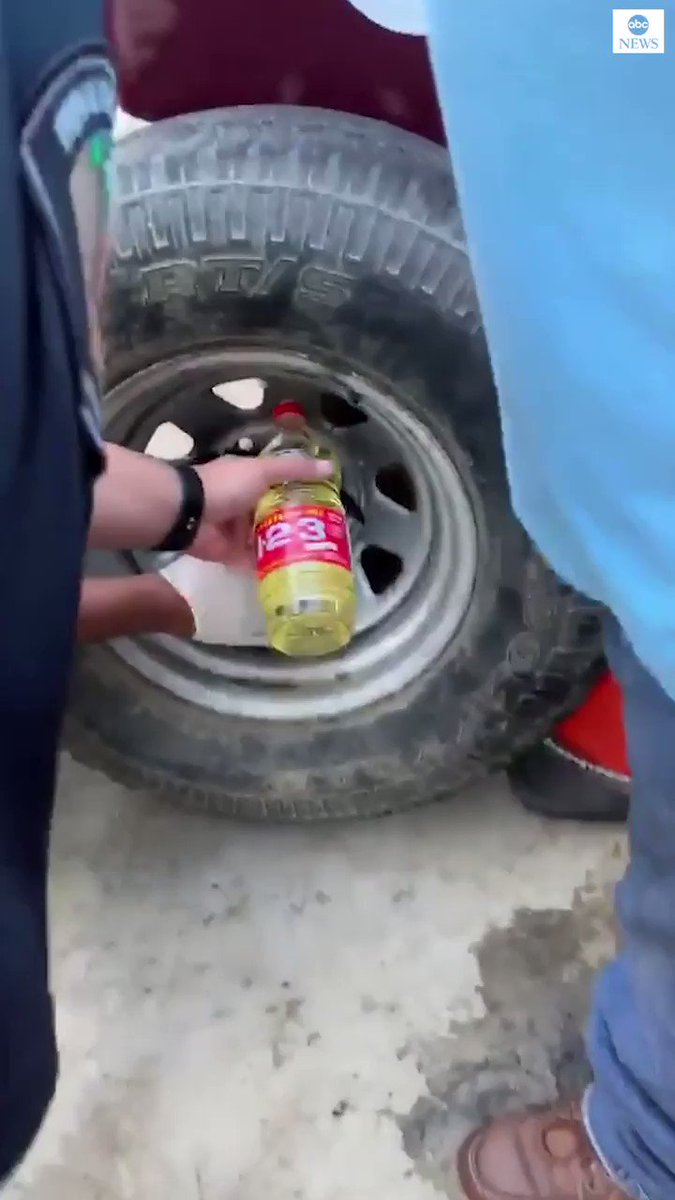 You probably wouldn’t want to drive longer or faster on a spare anyway, as the typical spare can make your vehicle feel more like an airplane ambling down a runway than a car driving down a highway.
You probably wouldn’t want to drive longer or faster on a spare anyway, as the typical spare can make your vehicle feel more like an airplane ambling down a runway than a car driving down a highway.
Once you are driving your spare, you should replace it with a proper full-size tire as quickly as possible to stay safe on the roads.
Types of Spare Tires:There are several kinds of spare tires, but which one you will use mostly depends on the type of vehicle you’re driving.
 These vehicles are significantly heavier than most sedans and mid-sized cars, so the spare tires are usually larger to support the vehicle’s full load, and possibly additional cargo or items being towed.
These vehicles are significantly heavier than most sedans and mid-sized cars, so the spare tires are usually larger to support the vehicle’s full load, and possibly additional cargo or items being towed.Full-size spares are typically much better quality than a donut spare; however, they still should be replaced as soon as possible. These spares often aren’t as durable, may have narrower wheels than the standard tires, and may not be produced by the same manufacturer as your other tires.
Full-size spare tires should be regularly inspected too, especially if they are secured to the bottom of the vehicle and therefore may be exposed to harsher elements.
How to drive safely on a spare tireRegardless of whether your spare is a donut or a full-size spare, you’ll want to be careful while driving on it. To drive safely on your spare tire, follow these best practices:
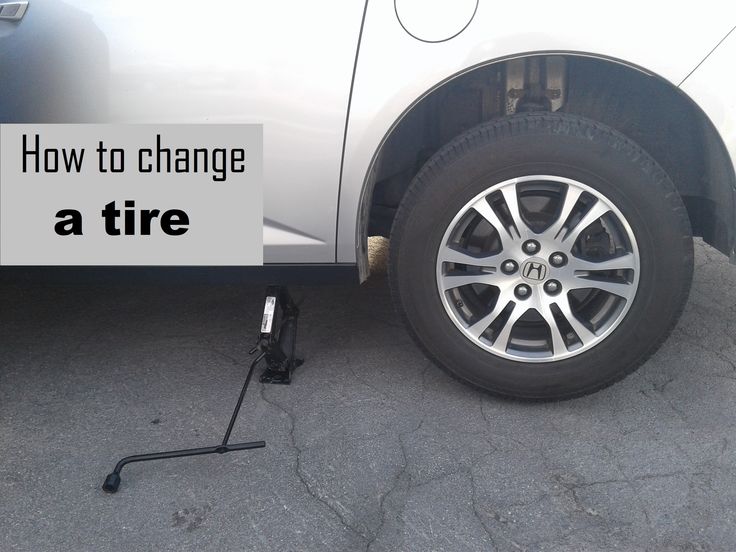 Spare tires often have different inflation pressure needs than your regular tires, so it’s wise to check them for proper inflation. Plus, a spare tire isn’t much help if it has low pressure.
Spare tires often have different inflation pressure needs than your regular tires, so it’s wise to check them for proper inflation. Plus, a spare tire isn’t much help if it has low pressure. Many spare tires have a lifetime of about eight years.
Many spare tires have a lifetime of about eight years.As the Midwest’s premier driving school, Top Driver takes pride in preparing our students for everything they encounter on the road and with their vehicle.
With more than 40 locations throughout Illinois, Michigan, and Ohio, Top Driver is your best resource for driver education. Each year we provide countless hours of in-vehicle training and classes, not to mention our free blog covering best practices for road safety. If you’re looking for teen programs for new drivers, adult, or remedial courses, Top Driver has you covered.
We’re also going the extra mile to ensure a safe learning space for our students and instructors by providing remote classroom education opportunities and implementing a coronavirus vehicle sanitization process.
Call 1 (800) 374-8373 or enroll online today!
Unforeseen situations on the road are not uncommon. A tire puncture is one of them, and it is very unpleasant. Movement in this case becomes unsafe. In this case, the car should always have a “spare tire” that can be quickly replaced by a punctured wheel. But this is only a temporary option, which is forgotten by some motorists who then continue to drive for such a long time.
A tire puncture is one of them, and it is very unpleasant. Movement in this case becomes unsafe. In this case, the car should always have a “spare tire” that can be quickly replaced by a punctured wheel. But this is only a temporary option, which is forgotten by some motorists who then continue to drive for such a long time.
Signs of breakdown are easy to notice on the go:
In this case, immediately stop on the side of the road and check the wheels. If one of them is empty, it's time to get an emergency sign from the trunk and install it. Then you need to loosen the nuts on the punctured wheel, jack up the car, and put the spare tire on. The spare tire must be pumped up to the desired pressure before driving.
After that, you can continue driving, but to the nearest service station or car shop to fix a flat tire or buy a new one. Moreover, driving on a spare wheel is allowed at a speed of no more than 90 km / h, and even less is better, since handling will be worse, and the spare wheel is not always a full-fledged wheel.
There are several types of spare wheels in cars today, and this determines how much you can drive on them:
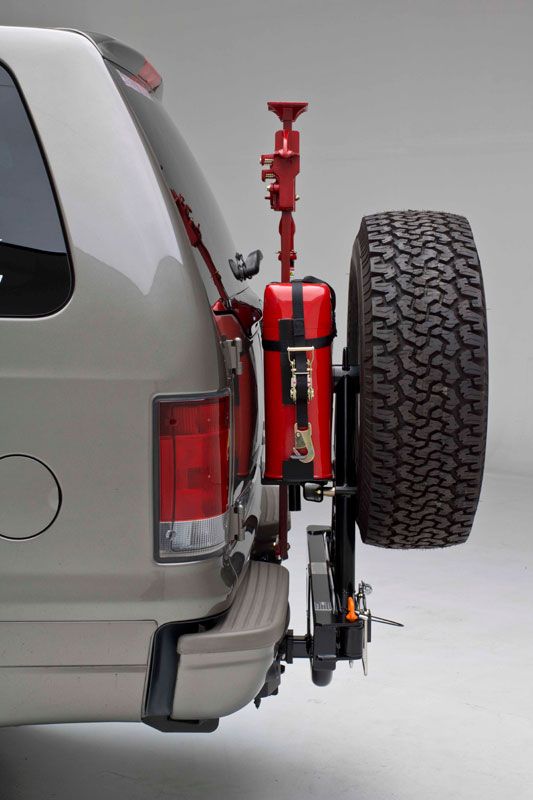 The width is also reduced, and before moving, you need to ensure that you inflate to the desired pressure. On such a wheel, you can drive up to 80 km, that is, to the nearest service.
The width is also reduced, and before moving, you need to ensure that you inflate to the desired pressure. On such a wheel, you can drive up to 80 km, that is, to the nearest service. In any case, you should never drive long and far on the spare tire. Its purpose is to get to the nearest service station to repair a punctured tire. The spare tire, even if it is a full-size one, differs from all others in its characteristics and is short-lived. Moreover, if you put it, then there is simply no second one if another such trouble happens. Therefore, it must be returned to the trunk as soon as possible.
All of the above applies to the summer period - you can ride on a spare tire exactly as long as you need to get to the nearest car service. And no more than 80-100 km in distance.
In winter, this rule also applies, but you need to act as quickly as possible and do not delay repairs. The fact is that the spare wheel usually has summer tires, and even then it has a very low tread. Therefore, even just getting to a place with it will be difficult, as the car's handling is greatly deteriorating.
The fact is that the spare wheel usually has summer tires, and even then it has a very low tread. Therefore, even just getting to a place with it will be difficult, as the car's handling is greatly deteriorating.
To compensate a little, the spare wheel must be put on the rear axle, even if the front axle is pierced - then the rear one is simply rearranged forward. Otherwise, every time you accelerate and decelerate, the car will turn to the side.
Some car manufacturers fit their models with full size spare tires just like the rest. Theoretically, you can ride it until it is completely worn out. But in practice it is not necessary to do this, for the following reasons:
Such a wheel not only initially has a bad effect on handling, but over time it will wear out faster than others, breaking the balance more and more. Therefore, in the end, you will soon have to buy new tires. Yes, it's not far from the accident.
Therefore, in the end, you will soon have to buy new tires. Yes, it's not far from the accident.
Important! Any spare tire is only for getting to the nearest car repair shop. Its long-term operation is not provided!
Of course, if you take care in advance and put a high-quality tire according to the season, then there will be no problems. But so few people do.
Landing - an emergency wheel of reduced size. It has a smaller tread width, and the height is also usually reduced. It needs to be pumped up much harder, and as a result, the outer diameter becomes normal for this car. European models are usually equipped with dokatka, as the roads in Europe are good, and on such a spare tire you can easily get to repairs.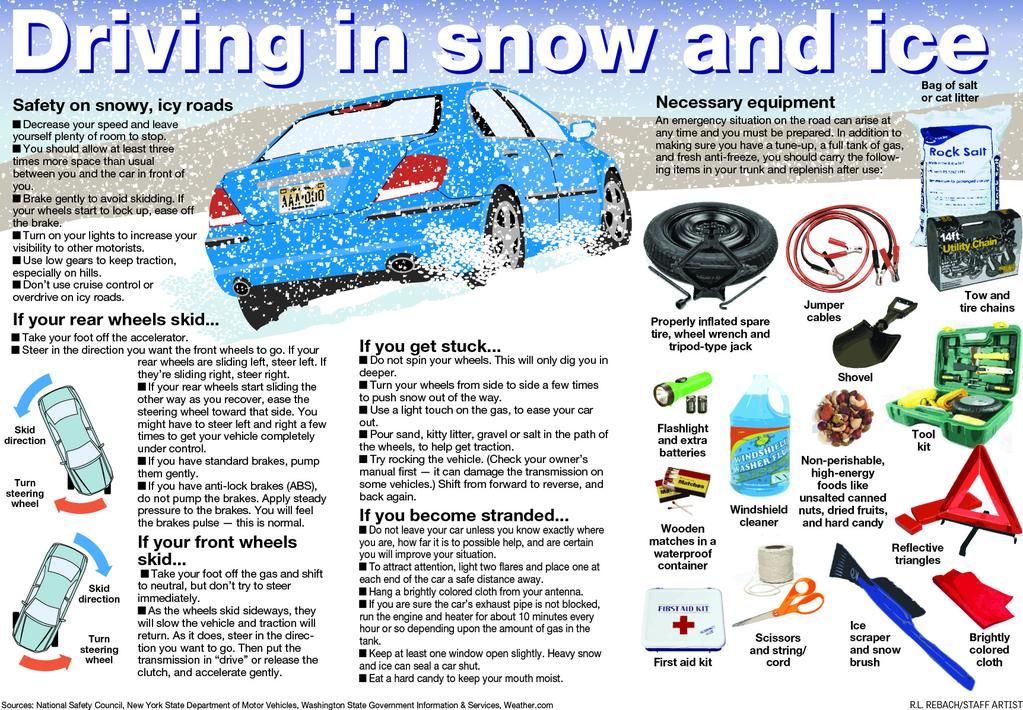 In addition, it saves space in the trunk.
In addition, it saves space in the trunk.
With the only advantage - small dimensions, the dokatka has many disadvantages:
Therefore, using such a spare wheel, immediately move towards the nearest service station, where you can repair or buy a normal wheel.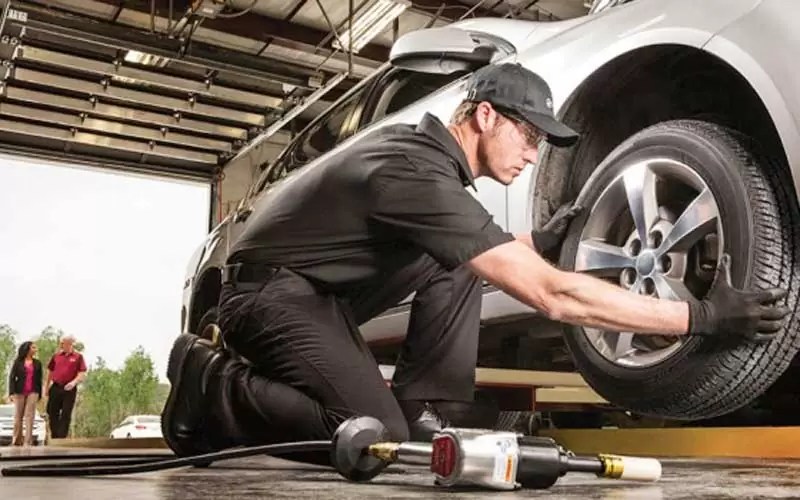 It is not for nothing that the stowaway is called an emergency option - on it you can only get to the repair. Sometimes you still have to call a tow truck, especially if the roads are not even close to European ones.
It is not for nothing that the stowaway is called an emergency option - on it you can only get to the repair. Sometimes you still have to call a tow truck, especially if the roads are not even close to European ones.
The absence of a spare wheel or a standard "roll-in" seriously complicates the situation. If the driver has the skills, you can put a temporary patch on the puncture, otherwise you will have to order a tow truck.
We recommend carrying a spare wheel, a repair kit for various occasions, the necessary tools, then you can get out of any traffic situation with dignity. If all this is not there, then you can drive on punched rubber a short distance to a service station or tire fitting. We are not talking about hundreds of kilometers of travel, we are talking about a short distance.
Leakage of air from a car tire can occur in different situations.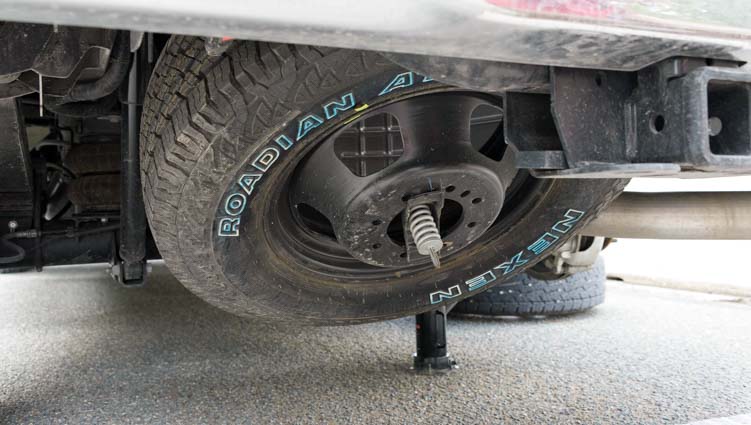 At the same time, punching is not necessary, there are other unforeseen and unpleasant situations. Most common:
At the same time, punching is not necessary, there are other unforeseen and unpleasant situations. Most common:

Potholes or bumps in the road can be a serious problem. Hitting such an obstacle at high speed can lead to deformation of the car disk, subsequently to damage to the rubber. Very serious damage, which is impossible to fix on your own, without the use of special equipment, you need to go to a tire service.
Use of used car tires - adhere to manufacturer's specified service life. Otherwise, the wheel may deflate due to high wear. There is a risk of explosion directly during operation.
Problems exist with tubeless tires - the fitting sometimes does not fit well on the disc, air leaks.
The main causes that lead to damage to car tires and air leakage are indicated. Whether it is possible to drive on a flat tire is determined by the driver himself, taking into account his experience and capabilities.
Driving with a flat tire is not recommended. Driving a car is significantly more difficult, there is a risk of getting into an accident, creating a threat to other road users.
Among the main problems that can lead to driving with low tire pressure are:

A flat tire is a serious hazard. Each driver must understand this and take all necessary measures to eliminate the problem. In no case should a puncture be ignored, at high speed the situation can completely get out of control. The ideal would be to replace the wheel with a spare, repair at the nearest tire shop.
A car tire is a complex system. Consists of different elements. Manufacturers use special technologies and materials to provide the declared driving characteristics of the car. The special pattern on the main part of the tire has its own functionality, and does not serve solely for beauty. Any deviation from the norm leads to a decrease in the functionality of the tire, respectively, the car loses its qualities. Its use becomes unsafe until the problem is solved.
Summer Drive Protection Sound Comfort
Rating:
4.5
Tires Goodyear Eagle F1 Asymmetric 3 SUV
Summer Drive protection
Rating:
4. 5
5
Tires Goodyear Eagle Sport TZ
Summer Drive protection
Rating:
4.5
Tires Goodyear EfficientGrip 2 SUV
Summer Drive Protection Run On Flat
Rating:
4.5
Tires Goodyear EfficientGrip Performance
Winter Drive protection
Tires Goodyear UltraGrip Arctic 2 SUV
Winter Drive Protection Sound Comfort
Rating:
4.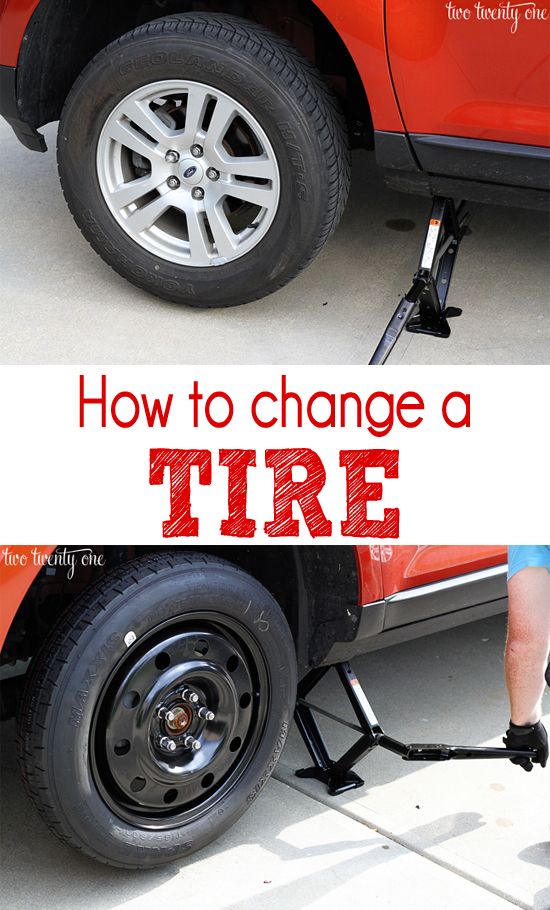 5
5
Tires Goodyear UltraGrip Ice 2
Winter Drive Protection Sound Comfort
Rating:
4.5
Tires Goodyear UltraGrip Ice SUV
Winter Drive protection
Tires Goodyear UltraGrip Performance+ SUV
All season Drive protection
Rating:
5
Tires Goodyear Vector 4Seasons Gen-3 SUV
Summer Drive Protection Run On Flat
Rating:
4
Tires Goodyear Wrangler HP All Weather
All season Drive protection
Rating:
4.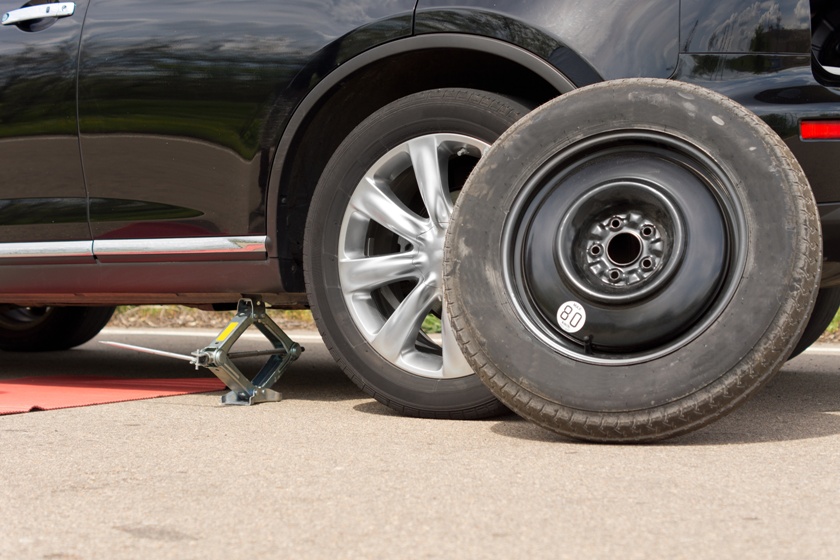 5
5
Tires Goodyear Vector 4Seasons
Summer
Rating:
4.5
Tires Goodyear Wrangler All-Terrain Adventure with Kevlar
Summer Drive protection
Rating:
4.5
Tires Goodyear EfficientGrip SUV
Summer Drive Protection Run On Flat
Rating:
4
Tires Goodyear Eagle F1 Asymmetric SUV
It is worth noting that under no circumstances should you drive with a completely flat tire. The situation can get out of control of the driver at any time, the tire will fly off the disk, he will receive damage that will lead to new problems. It's best to call a tow truck, no matter the cost.
The situation can get out of control of the driver at any time, the tire will fly off the disk, he will receive damage that will lead to new problems. It's best to call a tow truck, no matter the cost.
An exception to the rule may be a tire in which some air is still left. You can try to get to a service station or tire fitting. You can also try to inflate the tire to give yourself more time.
Low pressure driving is possible subject to the following rules:
The average distance allowed to drive with a half-flat tire is 10 kilometers. This is only allowed if the above rules are observed.
If the problem of low tire pressure, puncture or other damage is not addressed in a timely manner, there will be negative consequences. There may be problems with the operation of the following systems:
There may be problems with the operation of the following systems:
A vehicle with flat tires is a danger to other road users and its driving characteristics are affected.
It must be understood that movement with insufficient pressure leads to deformation of the rubber. You run the risk of completely damaging the tire, subsequently replacing it with a new one. Therefore, the decision to drive on half-flat tires must be made carefully, carefully evaluate all the consequences and alternatives.